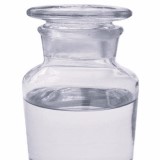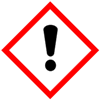 |
Glycol Salicylate or 2-Hydroxyethyl Salicylate or Ethylene Glycol Monosalicylate SDS Safety Data Sheet of Supplier Exporter Manufacturers' Representative |
Email: info@ammol.org |
Call Toll Free +1-855-552-6665 |
Glycol Salicylate or 2-Hydroxyethyl Salicylate or Ethylene Glycol Monosalicylate
CAS Number: 87-28-5
Molecular Formula: C9H10O4
Molecular Weight: 182.17

Glycol Salicylate or 2-Hydroxyethyl Salicylate or Ethylene Glycol Monosalicylate
Glycol Salicylate or 2-Hydroxyethyl Salicylate or Ethylene Glycol Monosalicylate SDS Safety Data Sheet
MSDS Sheet, Material Safety Data Sheet 27-April-25
1. Product Identification
Product Name/Synonyms: Glycol Salicylate or 2-Hydroxyethyl Salicylate or Ethylene Glycol Monosalicylate.
CAS No.: 87-28-5
EINECS EC Number: 201-737-2
Relevant uses and uses advised against (if any): Industrial Manufacturing.
2. Hazards Identification
GHS, Globally Harmonized System Classification in accordance with 29 CFR 1910
Classification according to Regulation (EC) No 1272/2008
Acute toxicity, Oral (Category 4), H302
Labeling according to GHS & Regulation (EC) No 1272/2008
GHS Label Elements  Harmful |
Signal Words: Warning
Hazard statements:
H302: Harmful if swallowed.
Precautionary statements:
P261: Avoid breathing dust/fume/gas/mist/vapors/spray.
P270: Do not eat, drink or smoke when using this product.
P280: Wear protective gloves/protective clothing/eye protection/face protection.
P301+312: IF SWALLOWED: Call a POISON CENTER or doctor/physician if you feel unwell.
P302+352: IF ON SKIN: Wash with soap and water.
P333+313: If skin irritation or a rash occurs: Get medical advice/attention.
P305+351+338: IF IN EYES: Rinse cautiously with water for several minutes. Remove contact lenses if present and easy to do - continue rinsing.
3. Composition/Information on Ingredients
Product Name/Synonyms: Glycol Salicylate or 2-Hydroxyethyl Salicylate or Ethylene Glycol Monosalicylate.
CAS No.: 87-28-5
EINECS EC Number: 201-737-2
4. First Aid Measures
Always seek medical attention after first aid measures are provided.
Inhalation: If inhaled, remove to fresh air. If not breathing, give artificial respiration. If breathing is difficult, give oxygen and get medical attention immediately.
Ingestion: Never give anything by mouth to an unconscious person. Get medical attention.
Skin Contact: Immediately flush skin with plenty of water for at least 15 minutes while removing contaminated clothing and shoes. Get medical attention.
Eye Contact: Immediately flush eyes with plenty of water for at least 15 minutes, lifting lower and upper eyelids occasionally. Get medical attention immediately.
5. Fire Fighting Measures
Fire: As with most organic solids, fire is possible at elevated temperatures or by contact with an ignition source.
Explosion: Fine dust dispersed in air in sufficient concentrations, and in the presence of an ignition source is a potential dust explosion hazard.
Fire Extinguishing Media: Water spray, dry chemical, alcohol foam, or carbon dioxide. Avoid solid water jet as it can scatter the fire.
Special Information: In the event of a fire, wear full protective clothing and NIOSH-approved self-contained breathing apparatus with full face piece operated in the pressure demand or other positive pressure mode.
6. Accidental Release Measures
Personal precautions, protective equipment, and emergency procedures: Avoid breathing dust/fumes/gas/mist/vapors/spray. Use individual protective equipment (waterproof boots, suitable protective clothing, safety glasses, etc.).
Environmental precautions: Do not let the product enter drains, soil or water sources.
Methods and materials used for containment cleanup procedures and Storage:
Harmful solid. Stop leaking without risk. Do not get water inside container. Use water spray to reduce vapors. Prevent entry into sewers, basements, or confined areas; dike if needed.
7. Handling and Storage
Precautions for safe handling: Apply according to good manufacturing and industrial hygiene practices. Ensure proper ventilation. Wash thoroughly after handling. Do not drink, eat, or smoke while handling. Avoid contact with skin, eyes, and clothing. Minimize dust generation. Avoid breathing dust/fumes/gas/mist/vapors/spray. Keep container tightly closed. Avoid ingestion and inhalation. Use individual protective equipment (waterproof boots, suitable protective clothing, safety glasses, etc.).
Conditions for safe storage, including any incompatibilities: Store in cool, dry, and ventilated area away from heat sources and protected from sunlight in tightly closed original container. Keep air contact to a minimum. Store protected from heat, sparks and ignition sources and incompatible materials. Avoid contact with skin and eyes. Avoid inhalation of dust/mist/vapor. Do not store it with incompatible materials like strong oxidizers. Avoid dust formation and control ignition sources. Employ grounding, venting and explosion relief provisions in accord with accepted engineering practices in any process capable of generating dust and/or static electricity. Empty only into inert or non-flammable atmosphere. Storage: Pure @ -20C protected from light. Short term shipping may be at room temperature.
8. Exposure Controls/Personal Protection
Airborne Exposure Limits:Â None established.
Ventilation System: A system of local and/or general exhaust is recommended to keep employee exposures low.
Personal Respirators (NIOSH Approved): For conditions of use where exposure to dust or mist is apparent and engineering controls are not feasible, a particulate respirator (NIOSH type N95 or better filters) may be worn.
Skin Protection: Wear impervious protective clothing, including boots, gloves, lab coat, apron or coveralls, as appropriate, to prevent skin contact.
Eye Protection: Use chemical safety goggles and/or full-face shield where dusting or splashing of solutions is possible. Maintain eye wash fountain and quick-drench facilities in work area.
9. Physical and Chemical Properties
Appearance:Â Viscous liquid or semi-solid..
Odor: No data found.
Odor threshold: No data found.
pH: No data found.
Relative density: about 1.25
Boiling Point: 294C literature.
Melting Point: 21C literature.
Flash point: No data found.
Auto-ignition temperature: No data found.
Decomposition temperature: No data found.
Upper/lower flammability or explosive limits: No data found.
Vapor pressure: No data found.
Vapor density: No data found.
Evaporation rate: No data found.
Flammability (solid, gas): No data found.
Partition coefficient: n-octanol/water: No data found.
Solubility: Slightly soluble in water.
10. Stability and Reactivity
Stability: Stable under ordinary conditions of use and storage.
Hazardous Decomposition Products: Carbon dioxide and carbon monoxide may form when heated to decomposition.
Hazardous Polymerization: none reported.
Incompatibilities: Strong oxidizers.
Conditions to Avoid: Heat, dusting, and incompatibles.
11. Toxicological Information
Oral mouse LD50: 1380 mg/Kg.
Carcinogenicity: No component of this product present at levels greater than or equal to 0.1% is identified as probable or confirmed human carcinogen by IARC, ACGIH, OSHA and NTP.
12. Ecological Information
Toxicity to fish: LC50 - Danio rerio (zebra fish) - 100 mg/l - 96 h.
Environmental Fate: When released into the soil, it is expected to leach into groundwater. When released into the soil, this material is expected to readily biodegrade. When released into water, this material is expected to readily biodegrade.
PBT and vPvB assessment: Not available.
Mobility: Will likely be mobile in the environment due to its water solubility.
13. Disposal Considerations
Whatever cannot be saved for recovery or recycling should be managed in an appropriate and approved waste disposal facility. Follow all the pollution control laws.
14. Transport Information
DOT (USA) &Â ADR/RID: Not controlled.
IMDG & IATA: Not controlled.
15. Regulatory Information
USA:
SARA 311/312: Acute health hazard. Harmful.
California Prop. 65 Components: Not listed.
16. Other Information
Disclaimer:
**************************
Our company provides this MSDS sheet in good faith but makes no representation as to its comprehensiveness or accuracy. This SDS sheet is intended only as a guide to the appropriate precautionary handling of the material by a properly trained person using this product. The above information has been compiled from various sources and has the possibility of discrepancy and being out-dated information. Individuals receiving the information must exercise their independent judgment and do further search in determining its appropriateness for a particular purpose. In no case shall our company be liable to loss or damages by the product user.
**************************
Please visit Main Page of Glycol Salicylate or 2-Hydroxyethyl Salicylate or Ethylene Glycol Monosalicylate Suppliers.
American Molecules, also known as ammol.org is a distributor, supplier and manufacturers' representative of all types of Pharmaceuticals, Functional Ingredients, Excipients and Specialty Chemicals in Texas USA. Our principals manufacture supply and export USP NF BP, Ph Eur, etc grades of chemicals pure and reagent grade, mineral fortifiers, FCC food grade. Tailor made particle size and customized specifications are offered. The principal's facility is having one or more of the certifications like FDA approval and GLP, cGMP, ISO9001, ISO14001, ISO/IEC 17025, ISO22000, FSSC 22000, ISO45001, FSSAI, Kosher, HALAL, COPP, WHO-GMP certified and Written Confirmation (WC) for export to Europe is available. The manufacturers suppliers and exporters observe WHO Good Manufacturing Practices and Good Laboratory Practices.





Suppliers and Manufacturers' Representative:

9910 Bent Oak Dr
Houston, TX 77040, USA
Call Toll Free: 1-855-55-AMMOL 1-855-552-6665
Email: info@ammol.org